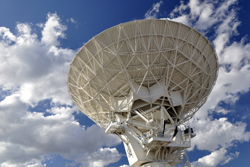European instrumentation for space exploration
Space exploration is largely dependent on detecting various forms of electromagnetic radiation, light waves formed by photons of different frequencies and energies travelling long distances across the Universe to detectors. These include photons at frequencies in the terahertz (THz) or sub-millimetre range. THz radiation is also readily absorbed by water and can be used to distinguish between samples of varying water content. In this respect, THz receivers are also critical for monitoring the Earth's atmosphere and detecting molecules that could be indicative of life on other planets or moons. Detecting high-frequency THz signals from very far away is a challenge. Heterodyne receivers have been successful in providing the frequency resolution and power sensitivity required of such studies. However, to date key components of such receivers are supplied from outside the EU. In addition, mass and power limitations often prohibit application in specific planned space missions. Scientists are addressing both these issues with EU funding of the 'Terahertz heterodyne receiver components for future European space missions' (Teracomp) project. They are developing industrial-scale capability for design and manufacture of THz electronics for space applications. During the first year, excellent progress was achieved with respect to Schottky diodes. These specialised diodes are used in high-frequency applications and are critical to the THz receiver systems. Scientists devoted much effort to process development as well as to modelling and characterisation of the diodes. The team is now focused on optimising individual components. Teracomp is expected have important impact on the competitiveness of the EU electronics industry as well as on EU space exploration.



